Is there any real difference between these, or is it just a different label?
Garden soil is compost-rich, heavy, drains well, and holds a lot of nutrients. Potting soil is lighter weight, fluffier, holds more water, and has more expensive ingredients. Potting soil is generally low-compost or compost-free and needs more regular fertilizers than garden soil.
Let’s take a deeper look at the differences between the two, and I’ll give you my recipes.
What’s in Potting Soil?
Potting soil is often predominantly peat moss or coconut coir. Perlite and vermiculite are often added to aerate and increase the holding capacity of the soil. Compost and topsoil are sometimes used but many growers avoid them. Sometimes a potting soil may use shredded bark or coarse sand to fill and aerate.
The main differences between potting soil and garden soil are weight, nutrient levels, and quality of ingredients. Potting soil is usually made with better ingredients than a garden soil, First off, it’s almost always got vermiculite and perlite in it.
Perlite is a white, glassy volcanic material that’s basically a puffed, white crumble that takes up water. It works to aerate the soil by adding larger particle size, and to increase the water-holding capacity of a mix. It’s usually used in a potting soil to help it not dry out.
Vermiculite is a soft mineral that when crushed and heated, puffs up and will absorb water. Similar to perlite, but it actually holds water better. Plant roots will seek out the water in both of these materials when the soil is dry. Both will hold some nutrients in the water they absorb.
Peat moss or sphagnum moss is the predominant material in most potting soils. Some mixes use a coconut husk material called coir instead. It’s significantly more expensive but also tends to have significantly more of a sustainable production.
Basically, it’s light-weight fluffy, sort of stringy material that will hold quite a bit of water and thus, also take in nutrients. All the bagged potting soils at my local garden center are mostly peat moss with some vermiculite and perlite. I do see a lot of them that also say “contains forest products”.
Generally, that means some sort of pine product. I have seen things like shredded bark, shredded pine straw (really long pine needles), shredded leaves, and even small woodchips and bits of twigs. It’s usually a random mix of these things, and sometimes it’s partially composted.
Cheaper options tend to have more of this mystery “forest product” but that’s not necessarily a problem. I prefer that for larger pots and make a similar mix myself. The main thing is for small pots and for starting seeds, use a fine potting soil that’s been sifted.
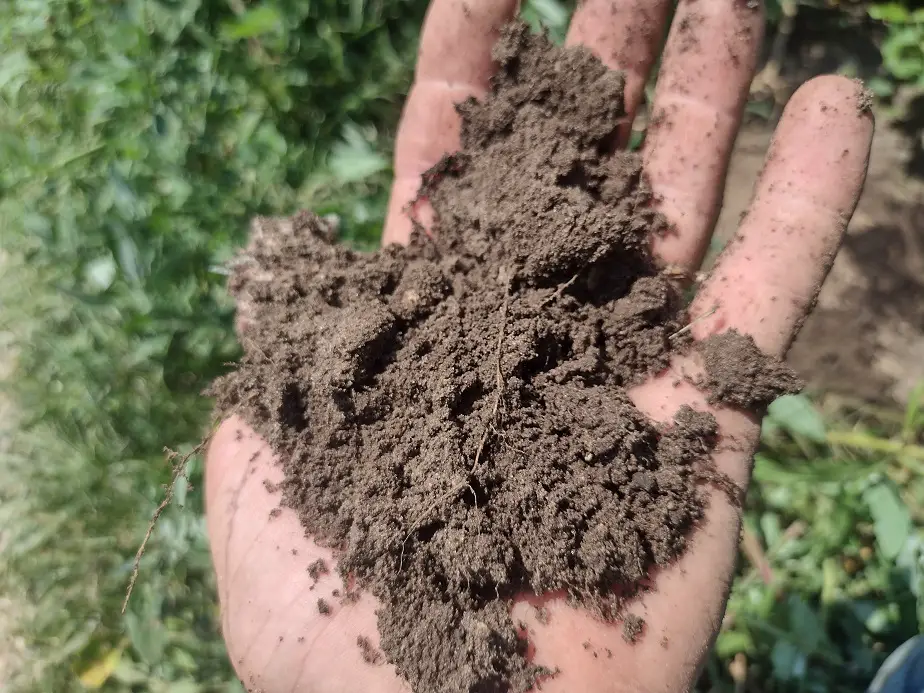
What’s in Garden Soil?
Garden soil is basically a potting soil mixed with topsoil or a compost/topsoil mix. It’s generally fairly heavy due to the addition of extra sand or topsoil, and high volumes of moist compost. Garden soil usually contains “semi-composted forest products”. Sometimes it has peat moss included.
With pots, most people don’t want to em very heavy so they can be moved. No one is out there carrying a garden, so material weight isn’t as much of a consumer concern. Sand is heavy, but cheap and it’s good at aerating a heavy compost.
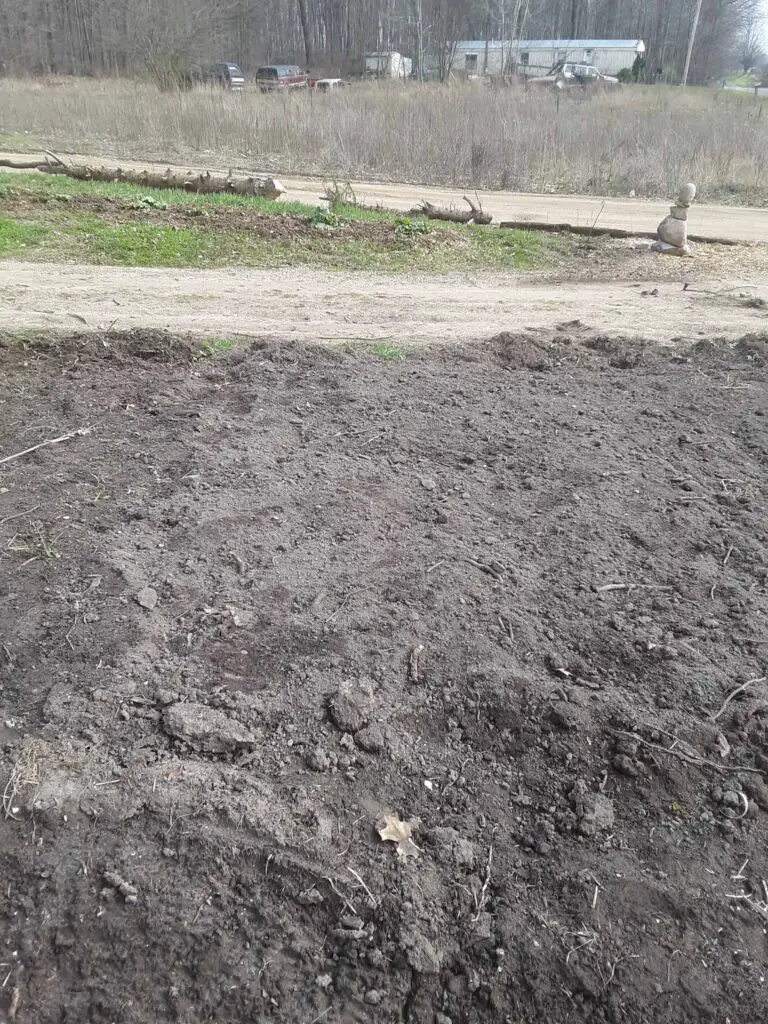
Personally, I have plenty of sand in my soil and would rather do without more. Companies add the coarse sand because it’s technically never going to be bad, and it’s sometimes very helpful to your native garden soil. Unfortunately, they don’t make 20 different kinds of garden soils for different uses.
But, you can. I make all my own soil mixes and blends and have gotten quite particular about using clean ingredients and tailoring the blend to the particular function and/or soil type it’s going to be used in. I’ll talk more about that in a few minutes.
Some purchased garden soils contain more sand and topsoil. Those are the less useful, cheaper stuff, You can tell by looking for an open corner and testing it. Take a pinch of the soil and rub it between your fingers. Just how gritty or sandy does it feel? Sand is rarely helpful, and never the best option.
Some mixes are more compost-heavy. That’s fine, I love good compost. The issue for me is that most of that compost is made from municipal sewer waste and contains high amounts of contaminants, microplastics, and traces of common medications; particularly hormonal birth-control.
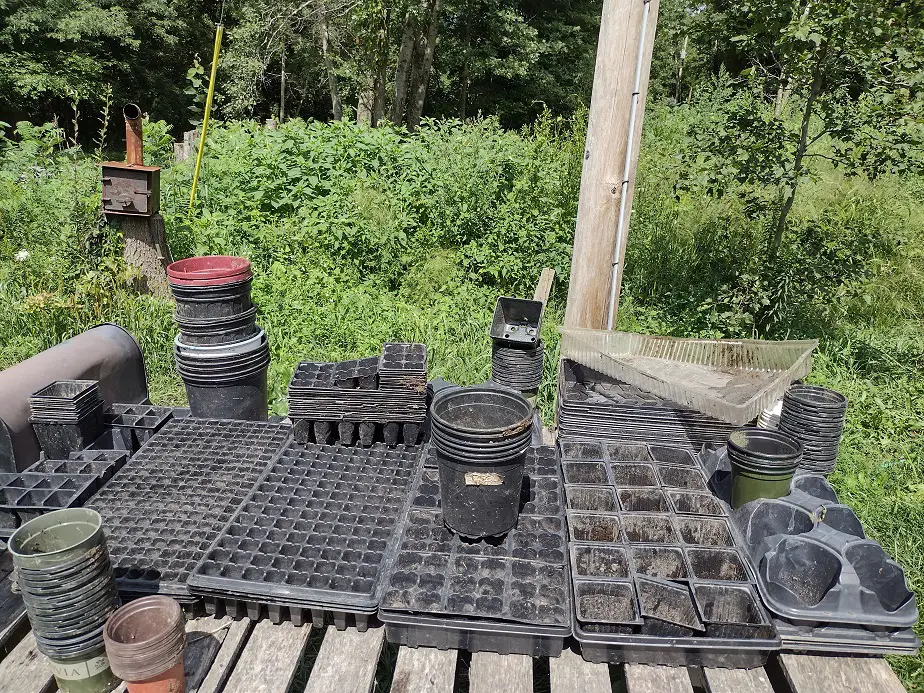
Can I Use Garden Soil in Pots?
Garden soil can be used in pots, but it may be a bit too chunky for small pots and it can make large pots too heavy to easily move. If you have larger pots that you aren’t planning on moving much, I say go for it. In smaller pots, the larger chinks often impede root development, particularly of young plants.
With a garden soil, you may end up having to water a pot more than you’d like to have to keep up with. That’s another reason I only want to do it in large pots. Basically, 1 gallon or more and I’ll consider it. The smaller pots just dry up way too quickly. A two or three-gallon pot? Any day of the week.
There are no ingredients in garden soil that would hurt container plants. I might hesitate if the garden soil seems quite sandy just because sand is an empty filler that doesn’t really offer any benefits.
It holds no water, retains no nutrients, and is heavy. If I had a lot of extra compost or manure to add to it, a sandy soil mix wouldn’t be so bad.
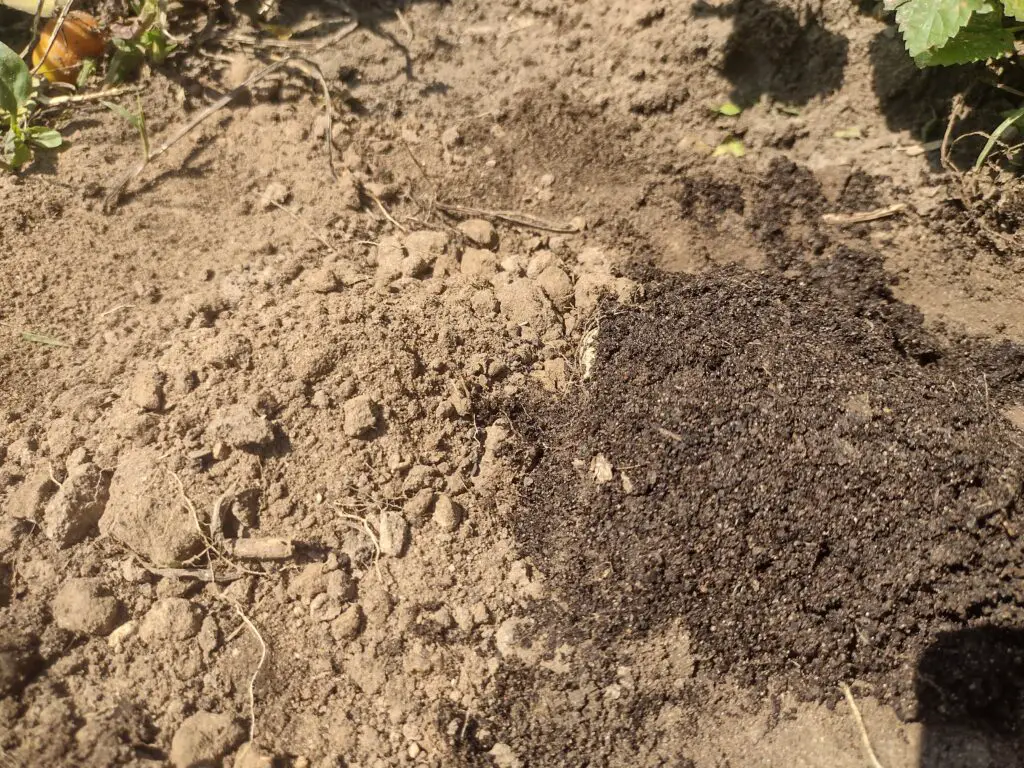
Can I use Potting Soil in a Garden?
Potting soil is a good amendment for gardens and would help to increase fertility and improve the condition of your native soil. It will fluff it and add a lot of organic matter that will feed the worms and microbes, and it breaks down adding to the soil humus levels.
There are cheaper and better options, but if that’s what you have you certainly can use it. I don’t buy potting soil anymore so I can’t say that I’d use it, but I wouldn’t be against anyone using it. I do buy peat moss for mixing my own potting soil and sometimes that ends up in a garden bed.
I also add a lot of compost to my garden every year. Peat moss and a finely sifted compost with added soil can make a fine potting mix, so in a way I almost do put potting soil in my garden. I don’t add perlite or vermiculite to my garden soil, but there is one other fancy ingredient I use.
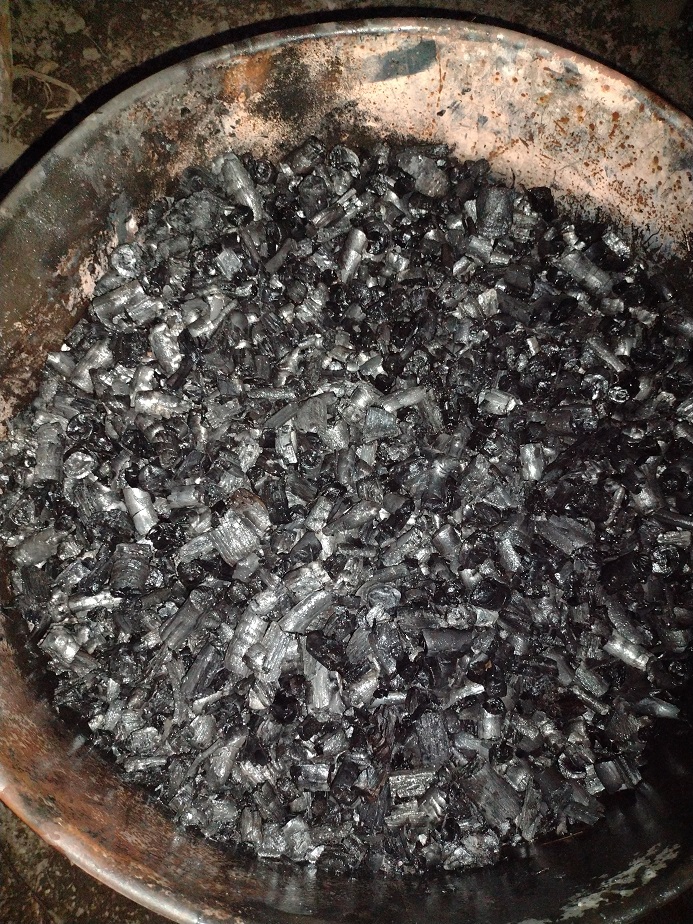
In my garden soil, and potting mix as well, I use biochar. If you’re not familiar with that, it’s a very clean, higher-temperature produced version of charcoal. Depending on how it’s prepared and its intended industry, it’s also called activated charcoal or activated carbon. For agricultural use, it’s biochar.
Basically, it’s like a longer-lasting version of compost. Compost breaks down at around 20 to 40 percent the first year. Biochar doesn’t break down. It has about the same water-holding and nutrient-holding capacities of compost, but the carbon structure itself can’t be broken down through any organic action.
If it’s made properly and goes through the right post-production processes to gain fertility and a vibrant biosphere, it’s an exceptional amendment that outperforms perlite and vermiculite. It also improves soil microbiology.
That’s what I use. And, I produce it myself. That way I know the quality and I know what’s in it. I definitely think that a quality biochar is better than either perlite or vermiculite in any soil, and it can at least rival a good compost at times.
Recipes for Potting Soil
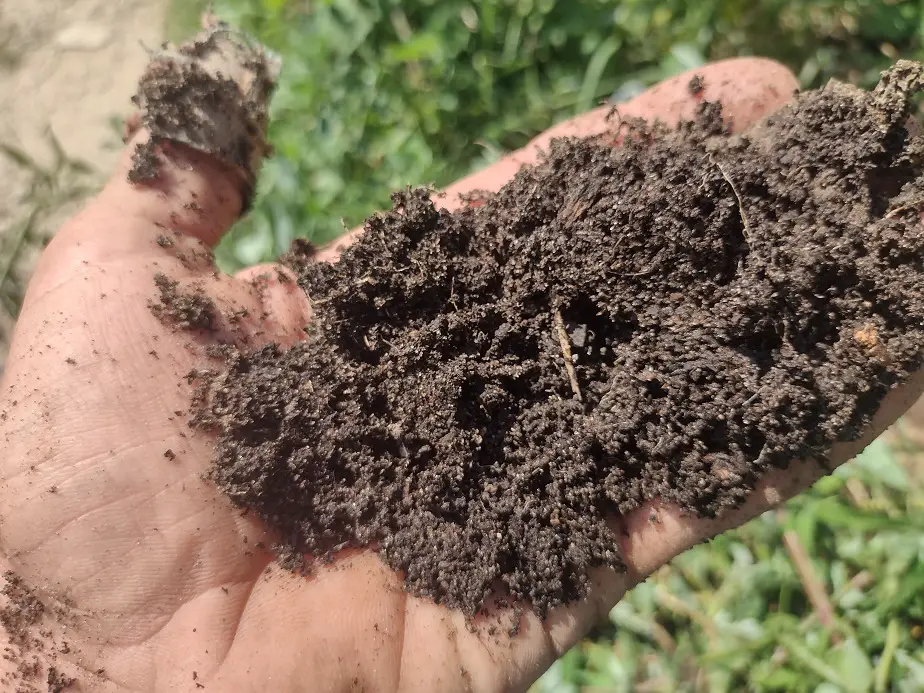
There are two types of potting soils, fine and super fine. Basically, if you are using it for starting seeds or for transplanting very small seedlings, you want a very even, loose, and fine soil mix. Large chunks impact root development of tiny seedlings, and it makes it tough to evenly fill small individual cells in trays.
Fluffy soil also makes it better for the early root growth of a plant. Seeds sown in even, lightweight, fluffy soil grow better and develop amazing roots. In pots smaller than half-gallon, I don’t like much chunky material.
In pots smaller than a quart, I don’t want anything chunky at all. I’ll sift through it, or spread it out and pick the chunks by hand.
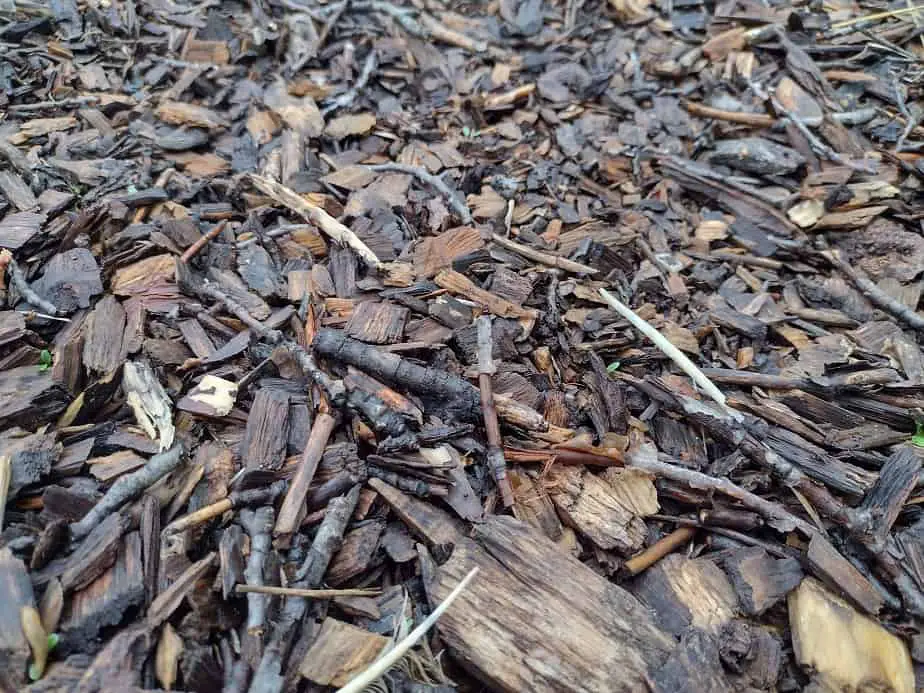
For larger pots, I don’t mind chunks. The healthiest natural soil I’ve seen has a lot of chunky stuff in it. I mixed in woodchips, wood shavings, and chopped straw in my 1, 3, and 5-gallon pots this year. I wanted a soil that would become extra rich in mycorrhizal fungi and humic acid. That’s how it’s done.
I used a finer soil to start my seedlings then transplantred them into a quart pot before going into a larger one for summer. I also use leaves, hay, grass clippings, rabbit manure, and horse manure at varying stages of decomposition. It depends on what I have and what I need done.
Here’s several of my recipes for Potting Soil
The Best Seed-Starting Soil
- one part composted plant matter
- one part composted manure
- two parts native soil
Sift and mix the ingredients well. If you don’t have a decent sifter, you can do small amounts by rubbing the soil between your hands to break up clumps and to find any stones or other chunks. You can use just one type of compost, but I prefer to use each of these two in equal amounts. I am tempted to add finely ground biochar to this mix at around 5 percent of total volume.
General Use Potting Soil
- One part compost
- one part peat moss of coconut coir
- one part native soil
- biochar
Sift and mix soil, peat, and compost, then add a cup and a half of small particle biochar per gallon of blended soil.
Alternative General Use Potting Soil
- one part compost
- one part native soil
- biochar
Mix soil and compost, then add a cup and a half of small particle biochar for each gallon of soil blend. That’s about 10 percent biochar.
Soil-less Potting mix
- one part compost
- one part peat moss
- biochar
Blend moss and compost, then add a cup and a half (approximately 10 percent) of a medium to small particle biochar. The best biochar would be between 1/4 inch and 1/16 inch in particle size. Be sure that the biochar is a fertile product, not a fresh empty char.
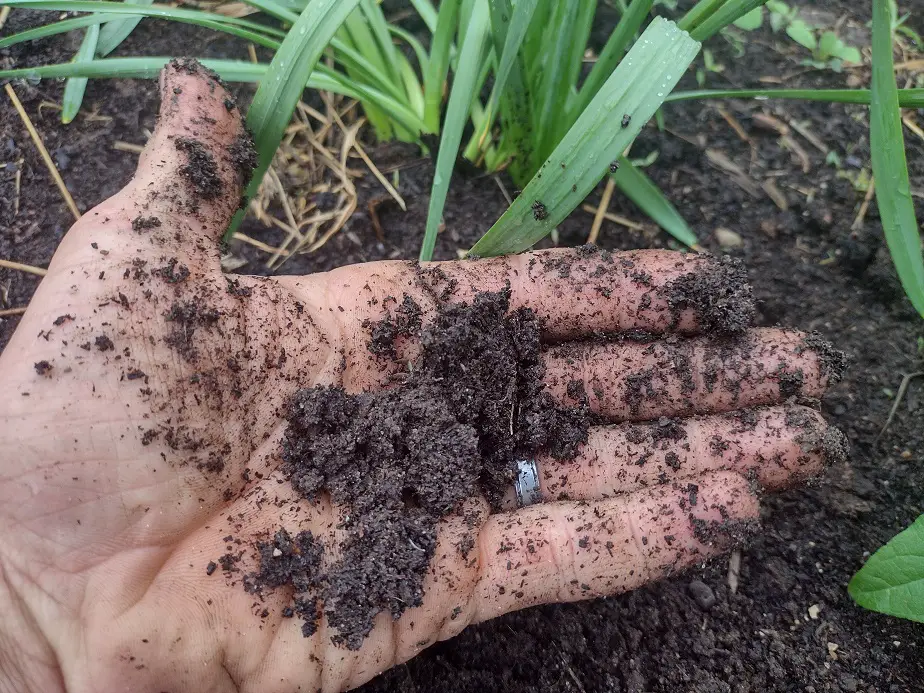
Recipes for Garden Soil
To Create 6-Inch Deep Garden Soil
- one quart compost per square foot of soil
- one quart biochar (medium particle) per square foot of soil
Apply evenly to soil and till, hoe, or dig well to incorporate. You can use twice the amount of compost instead of biochar, but the biochar adds valuable stability to your soil.
Intensive Soil Recipe
For each 20 square feet, add
- 5-gallons of manure
- 5-gallons of compost
- 5 gallons of biochar (medium to large particles)
Apply evenly over soil and dig, hoe, or till in well. This blend will permanently alter the structure of your soil and will cause a visible increase in soil health, structure, and productivity. This blend will take poor clay or sandy soil and make it into great garden soil long-term.
*Note– biochar is not recommended for use in very alkaline soils.
